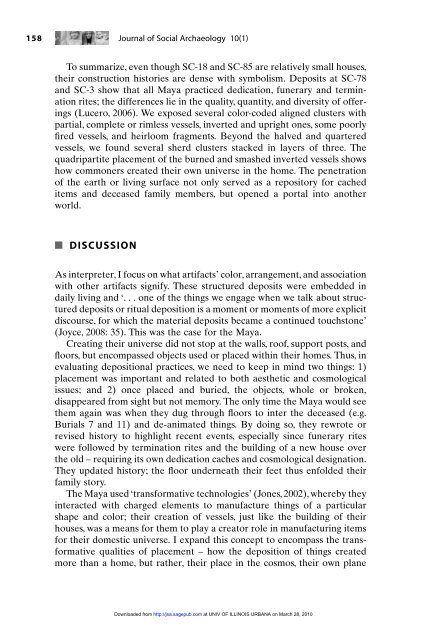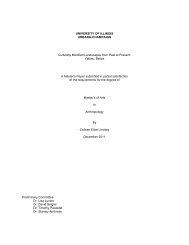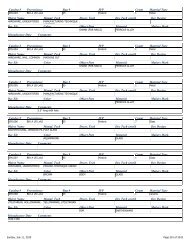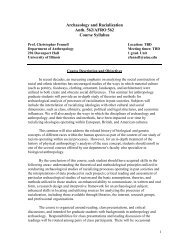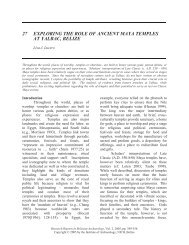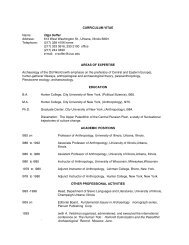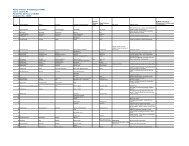Materialized Cosmology among Ancient Maya Commoners.
Materialized Cosmology among Ancient Maya Commoners.
Materialized Cosmology among Ancient Maya Commoners.
Create successful ePaper yourself
Turn your PDF publications into a flip-book with our unique Google optimized e-Paper software.
158 Journal of Social Archaeology 10(1)To summarize, even though SC-18 and SC-85 are relatively small houses,their construction histories are dense with symbolism. Deposits at SC-78and SC-3 show that all <strong>Maya</strong> practiced dedication, funerary and terminationrites; the differences lie in the quality, quantity, and diversity of offerings(Lucero, 2006). We exposed several color-coded aligned clusters withpartial, complete or rimless vessels, inverted and upright ones, some poorlyfired vessels, and heirloom fragments. Beyond the halved and quarteredvessels, we found several sherd clusters stacked in layers of three. Thequadripartite placement of the burned and smashed inverted vessels showshow commoners created their own universe in the home. The penetrationof the earth or living surface not only served as a repository for cacheditems and deceased family members, but opened a portal into anotherworld.■ DISCUSSIONAs interpreter, I focus on what artifacts’ color, arrangement, and associationwith other artifacts signify. These structured deposits were embedded indaily living and ‘. . . one of the things we engage when we talk about structureddeposits or ritual deposition is a moment or moments of more explicitdiscourse, for which the material deposits became a continued touchstone’(Joyce, 2008: 35). This was the case for the <strong>Maya</strong>.Creating their universe did not stop at the walls, roof, support posts, andfloors, but encompassed objects used or placed within their homes. Thus, inevaluating depositional practices, we need to keep in mind two things: 1)placement was important and related to both aesthetic and cosmologicalissues; and 2) once placed and buried, the objects, whole or broken,disappeared from sight but not memory. The only time the <strong>Maya</strong> would seethem again was when they dug through floors to inter the deceased (e.g.Burials 7 and 11) and de-animated things. By doing so, they rewrote orrevised history to highlight recent events, especially since funerary riteswere followed by termination rites and the building of a new house overthe old – requiring its own dedication caches and cosmological designation.They updated history; the floor underneath their feet thus enfolded theirfamily story.The <strong>Maya</strong> used ‘transformative technologies’ (Jones, 2002), whereby theyinteracted with charged elements to manufacture things of a particularshape and color; their creation of vessels, just like the building of theirhouses, was a means for them to play a creator role in manufacturing itemsfor their domestic universe. I expand this concept to encompass the transformativequalities of placement – how the deposition of things createdmore than a home, but rather, their place in the cosmos, their own planeDownloaded from http://jsa.sagepub.com at UNIV OF ILLINOIS URBANA on March 28, 2010


